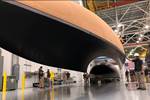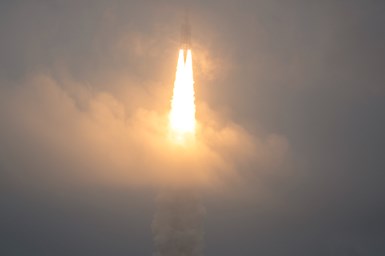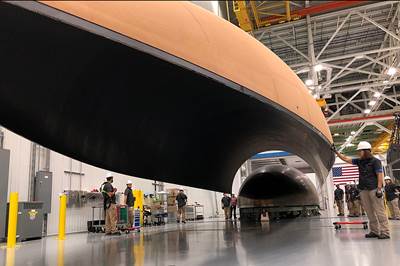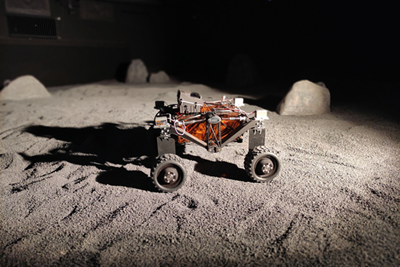NASA’s James Webb Space Telescope successfully launches to space
Innovative technologies and composite materials from RUAG Space and Toray Advanced Composites contribute to protection of the complex observatory at launch and during its six-month journey in space.
NASA’s (Washington, D.C., U.S.) composites-intensive James Webb Space Telescope (JWST) was successfully launched at 7:20 a.m. EST on Dec. 25 via an Ariane 5 rocket from Europe’s Spaceport in French Guiana, South America. After a decade of testing and fine tuning, JWST, a partnership between the European Space Agency (ESA) and the Canadian Space Agency (CSA), will explore every phase of cosmic history. The telescope is designed to take a deeper look into space than its predecessor, the Hubble Space Telescope, launched in 1990.
“The James Webb Space Telescope represents the ambition that NASA and our partners maintain to propel us forward into the future,” says NASA administrator Bill Nelson. “The promise of Webb is not what we know we will discover; it’s what we don’t yet understand or can’t yet fathom about our universe. I can’t wait to see what it uncovers!”
Ground teams began receiving telemetry data from Webb about five minutes after launch. The Arianespace (Évry-Courcouronnes, France) Ariane 5 rocket performed as expected, separating from the observatory 27 minutes into the flight. The observatory was released at an altitude of approximately 870 miles (1,400 kilometers). Approximately 30 minutes after launch, Webb unfolded its solar array, and mission managers confirmed that the solar array was providing power to the observatory. After solar array deployment, mission operators will establish a communications link with the observatory via the Malindi ground station in Kenya, and ground control at the Space Telescope Science Institute in Baltimore, Md., U.S., will send the first commands to the spacecraft.
As of today, engineers and ground controllers will have begun conducting the first of three mid-course correction burns, firing Webb’s thrusters to maneuver the spacecraft on an optimal trajectory toward its destination in orbit about one million miles from Earth. Considered the world’s largest and most complex space science observatory, JWST will now begin six months of commissioning in space, with first images to be delivered at the end of its journey, aided by four state-of-the-art science instruments with highly sensitive infrared detectors of unprecedented resolution.
Technology innovations
JWST comprises a diverse assortment of cutting-edge composites technology from a range of industry companies, which aided in its Dec. 25 launch, and will play a vital part in completing its six-month mission. For example, in collaboration with Northrop Grumman Aerospace (Falls Church, Virg., U.S.), Toray Advanced Composites (TAC, Morgan Hill, Calif., U.S.) was chosen for this mission based on its heritage within the aerospace industry of engineering and manufacturing high-quality, highly reliable composites.
Specifically, these materials were applied for the structural design of the telescope’s Optical Telescope Element (OTE), the Integrated Science Instrument Module (ISIM) and the Spacecraft Element (SCE). JWST joins TAC’s long list of successful launches of other well-known aerospace projects, including the Mars Perseverance Rover, Mars Ingenuity helicopter and even the Kepler Space Telescope.
The telescope is outfitted with the company’s high modulus carbon fiber and cyanate ester prepreg resin system, materials that are engineered for precise strength, stiffness and lightweight, and are able to carry out the mission in the extremely challenging environment of space.
“We are honored to be included as the fiber and prepreg material supplier for JWST and I can’t think of a program more well-suited to meet Toray’s core mission of contributing to society through the creation of new value with innovative ideas, technology and products,” says Eric Howard, aerospace sales director of Toray Advanced Composites.
Moreover, during liftoff and its journey through the atmosphere, JWST was protected by RUAG Space’s (Zurich, Switzerland; renamed Beyond Gravity) payload fairing, the top of the Ariane 5 rocket. The 17-meter-high structure — which can be assumed to use composites, see “Fully U.S.-made fairing launched into space features OOA composites”) — was produced at the company’s site in Emmen, Switzerland. The Webb’s sunshield, which is around the size of a tennis court, was specially engineered to fold up and fit within the 5.4-meter-diameter fairing.
“Our fairing was custom-made for this payload,” says Holger Wentscher, who heads RUAG Space’s Launchers business unit. The launch vehicle was controlled by a RUAG Space on-board computer (“brain”). Once JWST reached a certain height, the two halves of the payload fairing were successfully separated and jettisoned from the launch vehicle.
At a later stage, a RUAG Space built separation system (payload adapter) separated the telescope from the rocket and placed it into orbit. The separation system was manufactured by RUAG Space in Linköping, Sweden. During launch the payload adapter held the Webb telescope and connected it with the rocket.
Additional features delivered by RUAG, including the telescope’s communication antenna system, the NIRSpec instrument and the Mid Infrared Range Instrument (MIRI), will all continue to contribute to the success of JWST. Developed and produced at RUAG’s Gothenburg, Sweden facility, the communication antenna system will be one of the first things to be positioned over the course of the telescope’s instrument and part deployment. The system consists of two antennas, one of which has a 0.6-meter diameter reflector made of carbon fiber that provides low weight and high precision at extreme temperatures. The second antenna is a small cup -type antenna that provides a backup function in another frequency band.
“All of the amazing science data from the telescope will pass through our antenna system. Just imagine, for instance, if this turns out to be the missing puzzle piece to help us better understand dark matter,” says Anders Linder, head of RUAG Space’s global Satellites business unit.
Two high-precision mechanisms for the telescope’s “super eye” called NIRSpec were also developed, built and tested by RUAG Space’s site in Vienna, Austria. This includes the mechanical support structures and ball bearings of the two filter systems referred to as the instrument’s Filter Wheel Assembly. The 200-kilogram “super eye” can detect faintest infrared radiation from the most distant galaxies, and is designed to observe 100 objects simultaneously.
The second European instrument, MIRI, will support all four of JWST’s science themes. The instrument’s contamination control cover, delivered in 2008, will protect MIRI against external contamination during the cooldown phase of the tests and after the launch. Additionally, this cryo-mechanism acts as an optical shutter for the instrument to allow on-board calibration and to protect the detectors against bright objects.
Finally, during assembly and before the telescope finally launched, a rotating and tilting device developed and produced by RUAG Space in Vienna, enabled engineers to work on the telescope from all sides. Depending on the requirements, the trolley moved the telescope to a vertical or horizontal position. RUAG Space has already delivered more than 80 “multipurpose trolleys,” which can rotate and tilt a satellite, to customers in Europe and the U.S.
“The launch of the Webb Space Telescope is a pivotal moment — this is just the beginning for the Webb mission,” says Gregory L. Robinson, Webb’s program director at NASA headquarters. “Now we will watch Webb’s highly anticipated and critical 29 days on the edge. When the spacecraft unfurls in space, Webb will undergo the most difficult and complex deployment sequence ever attempted in space. Once commissioning is complete, we will see awe-inspiring images that will capture our imagination.”
Related Content
PEEK vs. PEKK vs. PAEK and continuous compression molding
Suppliers of thermoplastics and carbon fiber chime in regarding PEEK vs. PEKK, and now PAEK, as well as in-situ consolidation — the supply chain for thermoplastic tape composites continues to evolve.
Read MoreTeijin lightweight materials enable VAIO portable displays
Teijin's Tenax TPCL and Panlite Sheet materials allow for the creation of complex, three-dimensional shapes in a single molding step.
Read MorePlant tour: Joby Aviation, Marina, Calif., U.S.
As the advanced air mobility market begins to take shape, market leader Joby Aviation works to industrialize composites manufacturing for its first-generation, composites-intensive, all-electric air taxi.
Read MoreMeasuring ply-wise deformation during consolidation using embedded sensors
Strip-type shape sensor method claims real-time measurement of ply-wise deformation.
Read MoreRead Next
Fully U.S.-made fairing launched into space features OOA composites
A United Launch Alliance Atlas V rocket launched a U.S. defense satellite into space. The payload fairing, produced by RUAG Space, is composed of OOA CFRP face sheets.
Read MoreAnisoprint continuous fiber co-extrusion technology powers lunar rover vehicle
Carbon fiber-reinforced wheel mount and control arm design reduces lunar rover weight to as low as 24 and 64 grams, respectively.
Read More“Structured air” TPS safeguards composite structures
Powered by an 85% air/15% pure polyimide aerogel, Blueshift’s novel material system protects structures during transient thermal events from -200°C to beyond 2400°C for rockets, battery boxes and more.
Read More


















.jpg;maxWidth=300;quality=90)









